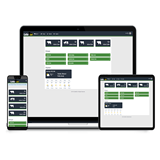Find out how to finance second-hand tractors with confidence. Learn about loan structures, balloon payments, used equipment criteria, and key tips to save on interest.
Key takeaways
- Used tractor prices in Australia typically range from $20,000 to $90,000, depending on brand, age, hours of use, and condition.
- Popular finance options for used agricultural machinery include chattel mortgages, hire purchase, equipment leases, and agri-specific finance packages.
- Deposits as low as 10% are common, with loan terms from 3 to 7 years, and interest rates between 7.5% to 11.5% p.a. depending on credit and asset risk.
- Many lenders finance tractors up to 15 years old with full service records and condition reports.
- Seasonal repayment plans and balloon options are available to align repayments with cash flow cycles.
- Temporary full expensing rules still allow for significant tax deductions on qualifying used farm machinery.
- Pre-purchase checks like PPSR reports, service history reviews, and independent inspections are essential to reduce finance risk.
Introduction
For many Australian farmers, a reliable tractor isn’t just a machine—it’s the heart of daily operations. Whether you’re replacing a worn-out unit or expanding your fleet, buying used can offer exceptional value. But used farm tractors often require tailored finance solutions due to age, depreciation, and seasonal income patterns.
This guide walks you through everything you need to know to finance a second-hand tractor with confidence. From loan types and eligibility to valuation tips and tax advantages, we’ll help you make an informed, cost-effective decision.
Understanding the used tractor market in Australia
Used tractors are widely traded across Australia. According to AgFarm and Tractor & Machinery Association data, over 12,000 used tractors are sold annually, many through dealers, auctions, and private sellers. Price points vary significantly:
- Sub-compact to compact tractors (under 40 HP): $10,000 – $30,000
- Utility tractors (40–99 HP): $25,000 – $70,000
- Row crop/high HP tractors (100+ HP): $50,000 – $120,000
Prices depend on:
- Hours of use
- Brand
- Service history
- Attachments included
Finance options for used tractors
1. Chattel mortgage
Most common structure for agricultural equipment. You own the asset upfront, and the lender uses it as security.
- Fixed or variable rates
- Interest and depreciation can be tax-deductible
- Balloon payments optional to reduce monthly repayments
2. Hire purchase
You lease the tractor until final payment, then take ownership.
- GST claimable on full value upfront (if on accrual basis)
- Flexible repayment terms
3. Equipment lease
The lender owns the equipment, and you lease it for a fixed term.
- Monthly payments are fully deductible
- End-of-term buyout option
- May suit newer businesses or those wanting flexibility
Eligibility and lender criteria
Lenders have stricter criteria for used assets, especially older models. Most will require:
- Equipment to be under 15 years old at start of finance
- Fewer than 8,000 engine hours (for high-usage models)
- PPSR clear title with no encumbrances
- Full service and maintenance history
- Acceptable residual value for balloon or buyout options
Valuation and condition: How they affect your finance
Before offering finance, lenders often require an independent valuation or equipment condition report. This assesses:
- Mechanical integrity (engine, transmission, hydraulics)
- Cosmetic condition (paint, rust, cabin condition)
- Tire condition and hours used
- Presence of attachments (front-end loader, PTO gear, etc.)
This helps determine the loan-to-value ratio (LVR), typically between 70–90% for used equipment.
Tips:
- Get a third-party inspection
- Ask for a valuation report from an accredited machinery valuer
- Keep photos and service records ready for your finance broker
Loan structure and repayment planning
Loan terms for used tractors usually span 3 to 7 years. Factors to consider when choosing your structure:
Balloon payment:
- Lowers monthly repayment
- Requires lump-sum at end of term
- Common in chattel mortgage and hire purchase deals
Seasonal repayments:
- Customised to your income cycle (e.g. post-harvest)
- Common in agribusiness finance plans
Deposit:
- May range from 10% to 30%
- Some lenders offer low-doc or no-deposit options for strong applicants
Tax considerations
Used tractors still carry substantial tax advantages if structured correctly:
- Chattel mortgage: Claim GST upfront (if registered for GST and on accrual basis)
- Depreciation: Eligible for full write-off under temporary full expensing until 30 June
- Interest: Deductible on business-use proportion
Always consult your farm accountant to optimise your structure.
Tips for getting approved faster
- Provide clear service history and photos
- Show proof of agricultural income (tax returns, BAS, or milk/meat/grain contracts)
- Ensure ABN is active and GST-registered
- Offer additional security (other farm assets or vehicles) if needed
Red flags to avoid
- Buying a tractor without PPSR check (could be repossessed)
- Not verifying hour meter accuracy
- No documentation on past maintenance or repairs
- Skipping independent inspection
- Financing tractors with non-working attachments that reduce resale value
Resale value and end-of-loan strategy
Thinking ahead to the end of your loan term can save thousands and help you extract maximum value from your tractor purchase.
Protecting resale value:
- Maintain full service records and document all repairs
- Avoid excessive modifications that reduce universal appeal
- Store equipment under cover to prevent rust or sun damage
- Keep the hour meter honest — inflated usage reduces resale potential
Planning for the end of term:
- Refinance the balloon: If cash flow is tight, many lenders offer balloon refinancing for 12–36 months
- Sell and upgrade: Trade in your tractor before it dips below lender finance thresholds (usually 20+ years old)
- Early payout option: Most loans allow early payout with minimal penalties if you're ahead financially
- Plan your timing: Selling just before peak demand seasons (harvest, spring) can increase resale price by 10–20%
FAQs: Financing used farm tractors in Australia
1. Can I finance a tractor that’s over 10 years old?
Yes, but it depends on the lender. Many will finance tractors up to 15 years old if in good condition with service history.
2. Do I need a deposit to finance a second-hand tractor?
Often yes—10% to 30% is standard. Some agri-finance lenders offer no-deposit options to established farming businesses.
3. Are there tax advantages to financing used tractors?
Yes. GST claims, interest deductions, and temporary full expensing can offer major savings.
4. Can I use seasonal repayment plans?
Absolutely. Many lenders offer tailored repayment schedules tied to your crop, dairy, or livestock income cycle.
5. Where can I get a valuation for a used tractor?
Use certified valuers (e.g. members of the Australian Property Institute) or request condition reports from farm machinery dealers.
6. How long does approval take?
If documents are ready, approvals can be as fast as 48 to 72 hours. Delays often happen when condition reports or service history is missing.
Final thoughts
Financing a used farm tractor is a smart, cost-effective way to upgrade your fleet without breaking the bank. By understanding your loan options, knowing what lenders look for, and preparing your documents, you can improve your approval odds and secure terms that align with your seasonal cash flow.
Whether you’re buying privately, through a dealer, or at auction, take the time to inspect the asset, run a PPSR check, and get pre-approved through a lender that understands agriculture.


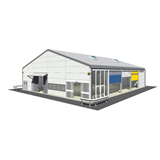
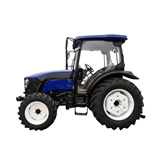


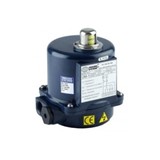

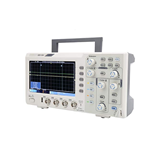



-160x160-state_article-rel-cat.png)
